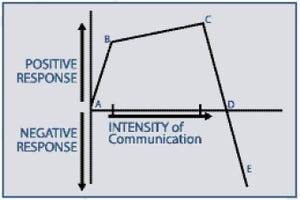You gain the most working to understand and helping others first.
March 3, 2015

When cell phones were still a pricey novelty rather than a disposable accessory, Richard Porter had one sitting on the dash of his pickup.
Porter was working high atop a grain elevator at the time. An employee was down below, tying tools to a rope for Porter to hoist up.
The phone started ringing.
“Just hit any key, and you can answer the call,” Porter hollered down.
“But which key should I push,” came the reply from below. The employee had never used one of the newfangled gadgets.
“Just hit any key,” Porter hollered again.
Silence.
“Well, I hit the red key,” the employee shouted up the rope. “The phone went dead and quit ringing.”
“Why did you hit that one,” Porter screamed. “The red key is the ‘off’ switch!”
This is one story Porter has gleaned from more than three decades of growing stocker cattle, farming and finishing cattle in his own feedlot near Reading, Kan. It is one Porter uses to illustrate communication essentials in a forthcoming book he’s writing.
“Never send a message that can be understood,” Porter says. “Always send a message that can’t be misunderstood.”
The book describes what Porter calls informal strategic alliances (ISAs) and how to get the most out of them. ISAs are all of the interactions everyone has with clients, employees, employers, family, etc. They’re relationships engaged in for mutual benefit, but like communication itself, are typically taken for granted to the point of being invisible—something we do without thinking, so we often do poorly.
“Be selfish. Help others,” Porter says, sharing the core concept of ISAs.
In the book, he explains, “Helping others is a virtue, but it is often poorly marketed as a moral obligation. A much stronger case can be made for helping others so you will benefit yourself. It is based upon the main pillar of economics that each person is trying to maximize his or her own benefit. This book suggests the best way to maximize your own benefit is to initially focus on helping the other side. If you place value on helping others, these strategies are even more important.”
The notion is simple enough. But, Porter is the first person I know who has deconstructed the components of these relationships so people can understand them with more clarity and execute them with more intention and success.
If you think all of this sounds like intriguing fodder for a book, but likely to have no practical application, consider a straight-up economic example from Porter’s own experience.
Some of you will remember that Tyson (IBP before that) used to have a packing plant at Emporia, Kan. That’s about 40 miles from Porter’s feedlot as the crow flies.
If you’ve ever had any experience on either side of the feedlot and packer equation, then you will be unsurprised that Porter’s local plant usually offered less for his cattle than the plant at Dodge City, clear across the state. The local packer’s logic was that Porter had less freight cost in them, so he still came out the same as if he accepted a higher price and hauled them further.
In other words, the relationship between Porter and his packer buyer was typical: combative, adversarial, etc.
One day, the Emporia packer buyer called Porter, hopping mad. Between shouts, he explained there was a high percentage of dark cutters in the load of cattle Porter delivered the previous day.
As the buyer threw his fit, Porter was trying to figure out what could have happened. He surmised it had to do with the timing of sorting the cattle and moving the load to a new pen, different than usual.
“It’s my fault. I have a good idea why there were dark cutters in that load, and so many of them,” Porter said, when he had a chance to interject. “Tell me how much my mistake cost you, and I’ll write you a check.”
A cattle feeder offering to reimburse a packer for anything is, of course, akin to finding a monkey riding a jackalope through your pasture.
It took Porter several calls to convince the packer buyer that he was serious and to get a figure. When he finally did, Porter wrote a check and delivered it in person.
The first seeds of trust were sown.
Fast forward. By the time Tyson shuttered the Emporia plant, Porter and his buyer had cleaved another $40/head from every head Porter shipped them, which they split. It had to do with achieving more efficiency by working more closely together. Such trust was forged that within four weeks of the phone conversation concerning dark cutters, Porter stopped negotiating the price. He and the buyer knew both would go out of their way to take care of the other one because the deal was so beneficial.
You can hear a lot when you listen
Hobbled to a different horse, Porter explains that effective ISAs revolve around trust. In fact, the title of his book gets at that, An Ounce of Loyalty is Worth a Pound of Cleverness—Informal Strategic Alliances Made Easy.
With this as background, Porter graciously offers bits of the communications perspective in his book to BEEF readers.
“Some people make the mistake of listening, just so they will be understood,” Porter says. “It is better to listen so you will understand.”
With that in mind, Porter explains paraphrasing what you hear back to the speaker is an effective, active listening tool:
You confirm to both yourself and to them you heard them correctly.
You do not have to immediately indicate if you agree or disagree.
This delay prevents you from making a rash response.
If they are saying something outlandish, they are often embarrassed when they hear their own thoughts repeated back to them.
Adjust the volume
A to B represents politely bringing a matter to another’s attention. Each small increase in communication should return a huge positive response from the listener. If it does not, then find a different person to interact with.
B to C represents making a stronger communication. Each increase in communication still returns a positive response, but the returns are diminishing.
C to E is where any increase in communication intensity yields a negative response.
Communications past point D may seriously damage your relationship.
“A common communication problem occurs when the speaker goes from not saying anything (point A), to saying way too much (point E),” Porter says. “Calmly but clearly make your point (point “B”), then be quiet and listen.”
 When listening, Porter also suggests keeping the graph in mind.
When listening, Porter also suggests keeping the graph in mind.
“If you give the speaker your undivided attention, and do not interrupt, they will not feel forced to go past point B to get your attention,” Porter says. “This will reduce the chance that they go past point C and an argument occurs.”
Avoiding conflict in touchy conversations
“When it’s necessary to bring up an issue for discussion, keep the following in mind so you won’t give offense, when none is intended, “ Porter says:
It is usually better to ask what I can do differently, than to tell others what they should do differently. Start your statements with, “I feel…,” not, “You are a….”
If you don’t say it as a personal attack, then the other side won’t feel personally attacked.
Discuss the problem objectively, the same way you would discuss the weather.
Just because you open a topic for discussion, does not mean that you must have the last word in closing the discussion. Politely listening while the other side ventilates is often time well spent.
Resolving conflict
“This intervention process is merely a simplified version of Robert’s Rules of Order, standardized guidelines for orderly and unbiased discussion,” Porter says. “But the rules are much more relaxed.”
This is how Porter has gone about it for years.
Ground rules for mediating a dispute
The mediator sits down with the two feuding people.
Only one of the three people will talk at a time, with no interruptions allowed.
Only one topic will be discussed at a time; irrelevant and extraneous topics will be deferred until the end of the discussion.
Each topic will be discussed until both parties understand the other’s point of view well enough to paraphrase it back to them.
The discussion continues until both parties agree that they have nothing else to say.
Discussion usually follows this trajectory
• When a neutral third party is present and taking notes, people exaggerate less.
• When parties are allowed to voice their problems without others interrupting, they often realize their problem is relatively trivial, and are embarrassed to be angry about a minor problem that could have been easily resolved or ignored. This is especially true when there is no significant underlying problem—just a case of elevated egos or a clash of personalities.
• Tensions cool when each person knows the other side clearly heard their position.
• Both sides realize the minor things they are doing which annoy the other side, and they begin to understand why those actions have contributed to the other’s frustrations.
• Each side quickly tires of talking about the feud and wants to get back to work, but I force the discussion to continue until all of the issues have been expressed at least once. I never allow people to think they were prevented from saying something they believe would have “won the argument”.
“Follow-up conversations rarely occur unless a new problem arises,” Porter says. “Both sides usually decide it is easier to quietly resolve the problem with the other person rather than endure another formal conversation where they are required to discuss their personal feelings. For most people, having to communicate about one’s feelings is considered a cruel and unusual punishment.”
Porter explains these mechanics are the same for resolving a problem you have with another person.
“Your focus is not to convince the other side, but to understand the other side,” Porter says. “When you understand them, then you can improve your actions. When they know that you understand them, they will try to understand you.”
You might also like:
Experts say ranching done right improves the environment and wildlife habitat
Is sexed semen the next reproductive standard?
Breathtaking photos of winter on the ranch
Bale grazing lets cows feed themselves
About the Author(s)
You May Also Like





